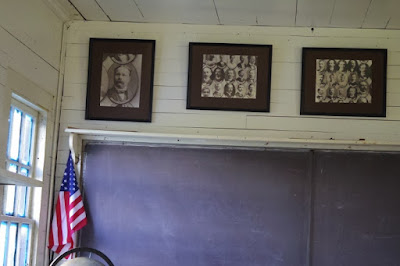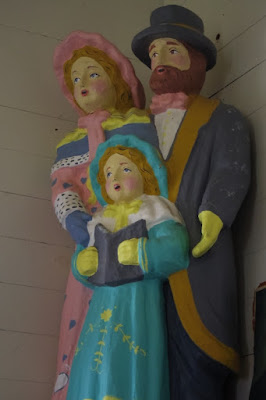| Note: This is part two of my story about the farmers’ market at Kelly’s Country Store, held this past weekend. On the grounds of Kelly’s Country Store is an old one-room schoolhouse, which was, during the nineteenth and twentieth centuries, a functional school. I had, until Sunday, never been inside the school. On Sunday, I had the opportunity to visit the school and to see what a school looked like for children more than one hundred years ago. Below are some of the pictures that I took inside this living example of local history.
In Grand Island, as in many communities, during the nineteenth and early part of the twentieth centuries, many children were educated in one-room schoolhouses. Children, from first grade to eighth grade, were taught by one teacher in a single room. These schoolhouses were made famous by the series of books written by Laura Ingalls Wilder. Subjects taught included reading, writing, arithmetic, history, and geography. The students practiced their writing and their arithmetic on slate boards, which could be easily erased with a slate sponge or a piece of cloth. Slate boards were especially popular in one-room schoolhouses from the nineteenth century until early in the twentieth century.
|










